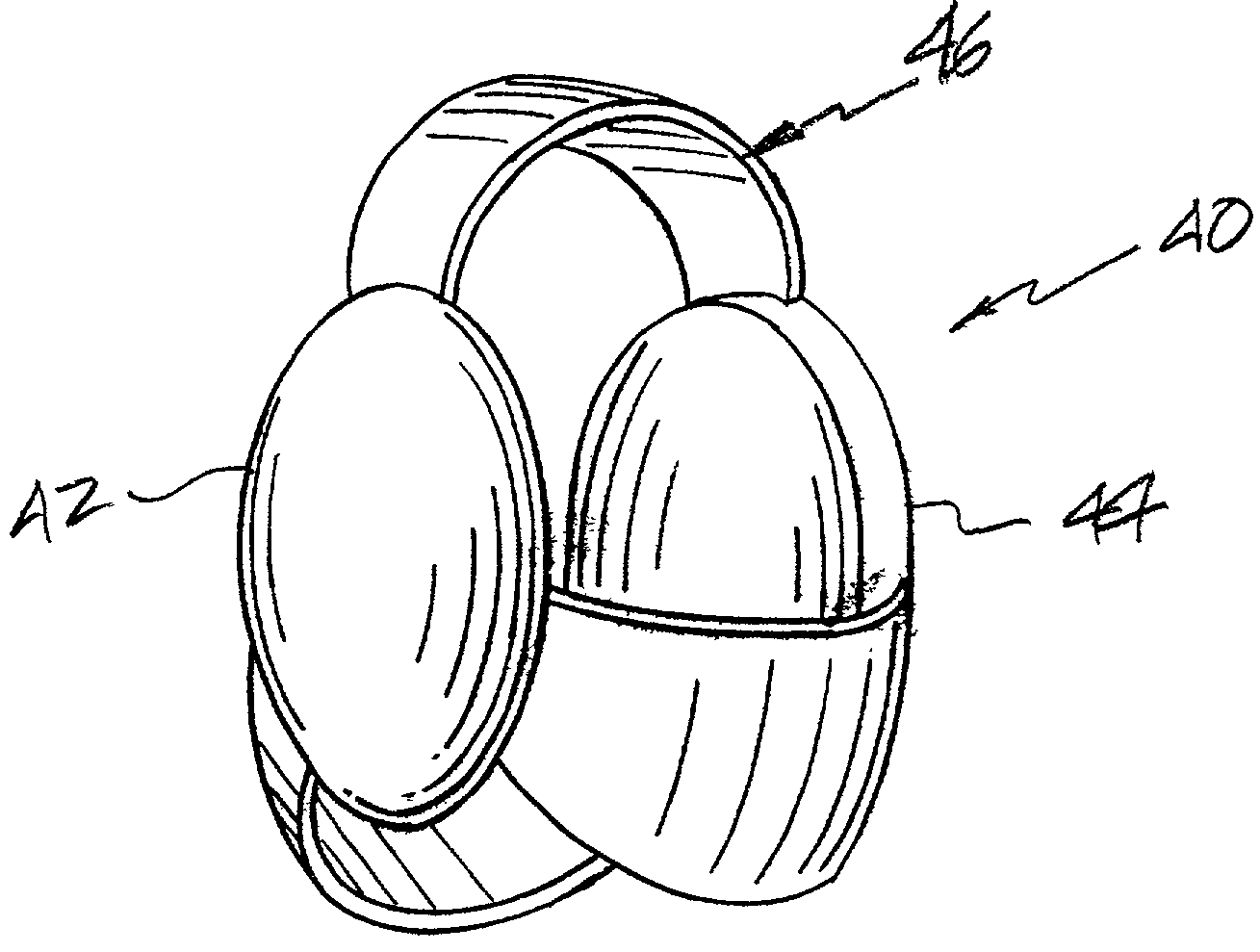Open chamber, elliptical, accommodative intraocular lens system
a lens system and elliptical technology, applied in the field of open elliptical, accommodative, intraocular lens system, can solve the problems of occlude vision, eventual blindness, iris atrophy, etc., and achieve the effect of improving vision and reducing presbyopia
- Summary
- Abstract
- Description
- Claims
- Application Information
AI Technical Summary
Benefits of technology
Problems solved by technology
Method used
Image
Examples
Embodiment Construction
[0036] Turning now to the drawings wherein like numerals indicate like parts, there will be seen preferred embodiments of the invention. Before describing the preferred embodiment, however, a brief statement about the context of the invention is believed appropriate.
Context of the Invention
[0037] Turning now to FIG. 1 there will be seen a partial cross-sectional view of an anterior segment of a human eye 20. Vision in humans is provided by a first convex / concave lens known as a cornea 22. This segment is roughly spherical and is transparent to light. The cornea 22 is connected at its perimeter to a spherical exterior body of the eye known as a sclera 24. An iris 26 is positioned within an anterior chamber of the eye 28 and serves to vary the amount of light permitted to pass into the eye structure. The iris 26 extends into and is joined with a muscular structure known as the ciliary body or muscle 30 which extends peripherally about an interior portion of the eye. A natural crystall...
PUM
 Login to View More
Login to View More Abstract
Description
Claims
Application Information
 Login to View More
Login to View More - R&D
- Intellectual Property
- Life Sciences
- Materials
- Tech Scout
- Unparalleled Data Quality
- Higher Quality Content
- 60% Fewer Hallucinations
Browse by: Latest US Patents, China's latest patents, Technical Efficacy Thesaurus, Application Domain, Technology Topic, Popular Technical Reports.
© 2025 PatSnap. All rights reserved.Legal|Privacy policy|Modern Slavery Act Transparency Statement|Sitemap|About US| Contact US: help@patsnap.com



